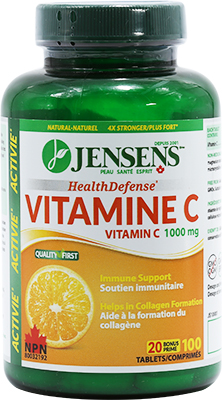- Products
- Product List
- Products by Category
- Elderly Care
- Antioxidant Support
- Sports Nutrition
- Bones & Teeth
- High Blood Pressure
- Blood Sugar Control
- Children's Health
- Detox & Liver Support
- Digestive Health
- Energy Boost
- General Health
- Brain Health & Memory
- Heart Health
- Joint Support
- Eye Health
- Erectile Dysfunction
- Men's Health
- Immune Support
- Beauty
- Sleep Management
- Diet & Weight Management
- Women's Health
- Circulation
- Cold, Cough & Flu
- Headache Relief
- Muscle Function
- Colon Health
- Stress & Anxiety
- Peri-Menopause
- Products by Condition
- Anemia
- Arthritis
- Cardiovascular Disorders
- Cognitive Function
- Diabetes
- Indigestion
- Insomnia
- Metabolism Irregularities
- Obesity
- Osteoporosis
- Poor Body Composition
- Post-Fitness
- Stress
- Featured
- Top Sellers
• Nutrient and energy metabolism
Why Jensens Vitamins?
|
Active Ingredients
Biotin (200 mcg), Choline (100 mg), Folate (500 mcg), Inositol (100 mg), Niacinamide (100 mg), Pantothenic Acid (100 mg), Riboflavin (100 mg), Thiamine (100 mg), Vitamin B12 (100 mcg), Vitamin B6 (100 mg).
Hypromellose, magnesium stearate, microcrystalline cellulose, silicon dioxide.
*2X stronger than HerbalGenn B50 Complex
VitalEnergie
NPN:80085293 Quantity:60 VegeCaps Product Type:B-100 Complex Cautions & Warnings:In case of accidental overdose, contact a physician or a poison control centre. Keep out of reach of children. |

Background
Biogenique Structurally Active-Orthogenic (SAO) technology
SAO Analysis
Scientific Evidence
Safety
Interactions you should know
Selected references
|
I)Female dietary antioxidant intake and time to pregnancy among couples treated for unexplained infertility.
II)Seasonal Variation of 25-Hydroxyvitamin D among non-Hispanic Black and White Pregnant Women from Three US Pregnancy Cohorts.
III)Weekly dose of Iron-Folate Supplementation with Vitamin-C in the workplace can prevent anaemia in women employees.
|
Customers who bought this item also bought:








